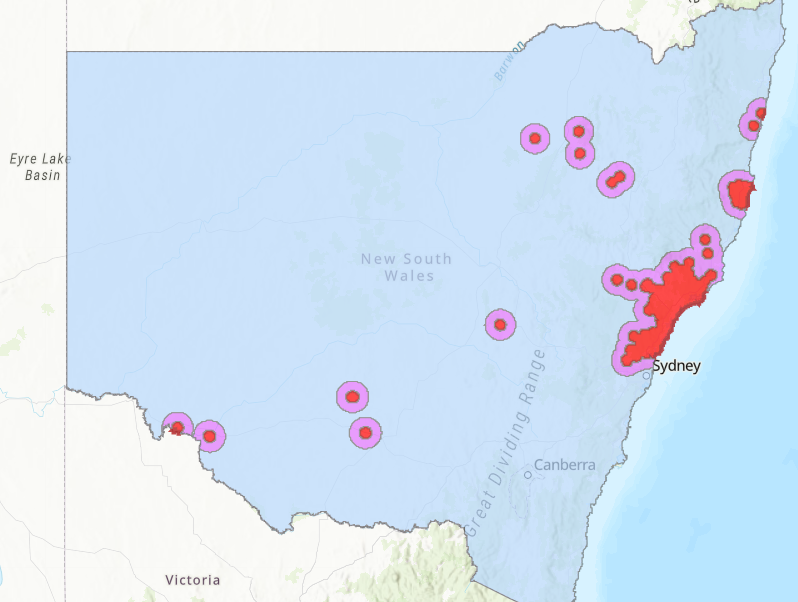Varroa mite battle an "absolute circus"
Kristin Murdock
16 September 2023, 3:40 AM
 Risk based zoning is the latest tactic in the fight against Varroa mite. (Image: NSW Apiarists Associations)
Risk based zoning is the latest tactic in the fight against Varroa mite. (Image: NSW Apiarists Associations)President of the Western Plains branch of the NSW Apiarists' Association, Daniel Warman, has blasted the Government's lack of clarity around the zoning response to the ongoing threat of Varroa mite on bees.
"It’s an absolute circus," he said. "Owners are having to euthanise their hives in red zones with no clear compensation to allow their business to survive."
The number of Varroa mite cases in New South Wales has risen to 264, prompting new measures to control the destructive parasites.
There has been a new detection north of Coffs Harbour and an additional nine infested premises detected in the existing Kempsey site.
"I really feel for the guys at Kempsey," Mr Warman said. "Many have their entire business, sheds, hives and everything in this zone and have been effectively wiped out."
NSW Department of Primary Industries (NSW DPI) are moving to undertake a risk-based approach to the Varroa mite issues, which proposes assessing new regional outlier infestations. Factors assessed will include mite load, length of time hives have been present and tracing linkages to assess the risk profile of a zone and determine appropriate zone sizes.
Mr Warman said the apiarist industry has been given no clear direction about the future.
"It’s a huge concern in a lot of aspects," he said. "I have 600 hives in Leeton, which is in the purple zone. I can't move the bees and they are getting to the point of starvation. Some beekeepers say they would rather see their hive euthanised rather than starving to death."
NSW DPI say that where zones meet the acceptable level of protection, a reduction in zone size could be considered. Where zones do not meet this level of protection a larger zone, or the standard 10km/25km zones should be maintained.

The latest DPI Varroa mite emergency zone map. SOURCE: dpi.nsw.gov.au
NSW DPI Deputy Director General - Biosecurity and Food Safety, John Tracey said the National Management Group has endorsed a proposal that zoning distances could be different depending on the individual risk of each infestation.
“Where infested hives have been recently moved, have low mite levels and a clear link to an older Eradication zone, the risk profile is actually very low, whereas in situations where infested hives have been present for a long time, have high mite loads or unclear tracing links, the risk is high."
While Mr Warman, understands the need for Varroa mite control, he says other countries have learned to live with this pest.
"We are one of the last countries to get Varroa mite," he said. "Eventually it will be just something we need to live with and learn to manage. But the government are talking that in red zones, there can be no hives for at least three years after eradication. And that's if eradication even occurs, which is unlikely."
"You can eradicate some from an area, but they are coming in on ships. Meanwhile, many beekeepers cannot survive. It's devastating. The Government really need to think about compensation going forward."
Dr Tracey said the standard zoning strategy remains essential for larger eradication emergency (red) zones such as Newcastle, Central Coast and Kempsey.
"It has also been important during the delimitation of the Newcastle and Central Coast outbreaks due to the high number of infested premises, risk of natural spread of mites and length of time the infestation has been present.
“This system was also implemented prior to the response through understanding and mapping of epidemiological networks, the strict movement restrictions being put in place, and very significant levels of surveillance being completed.”




